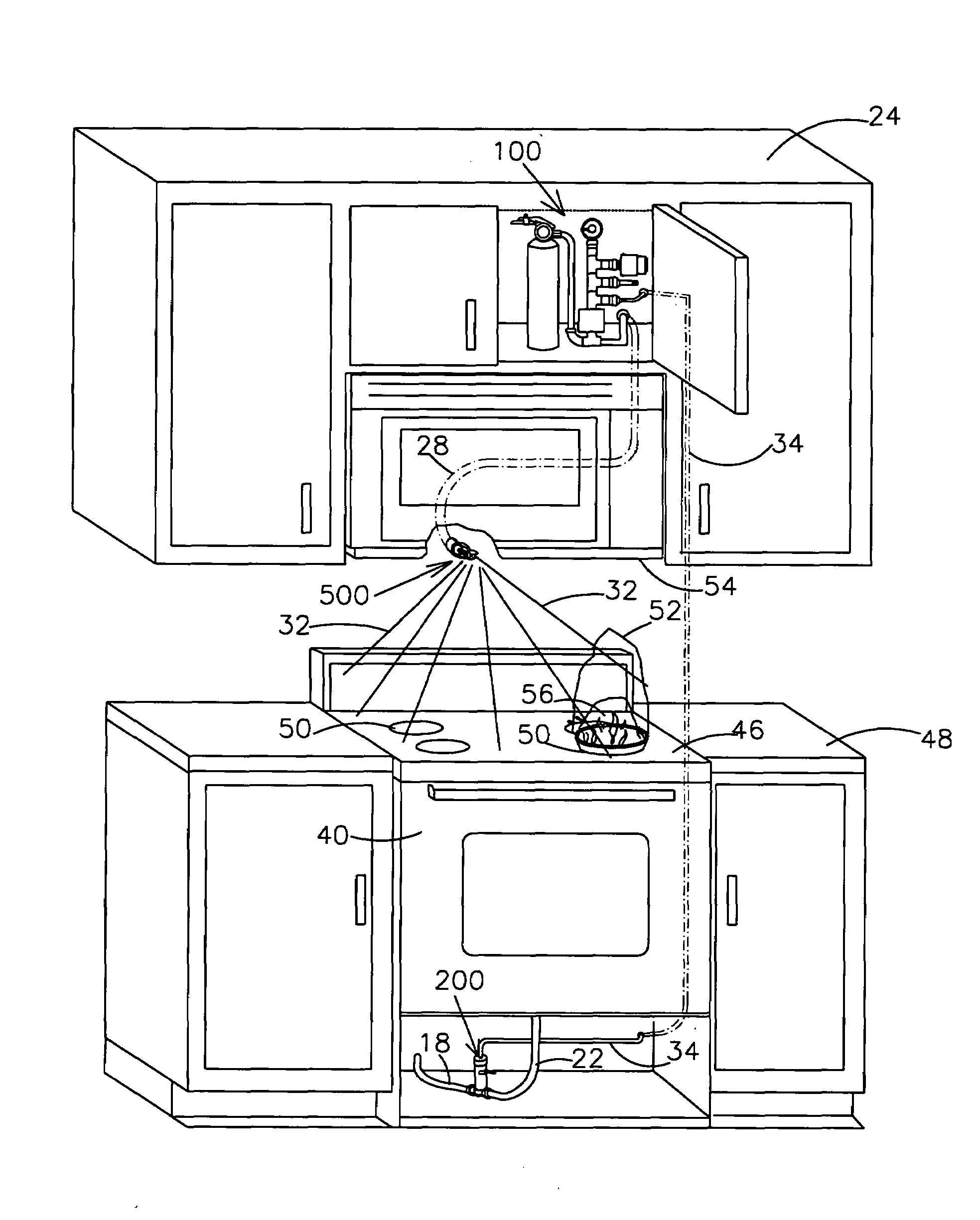Cookstove fire extinguishing system
a fire extinguishing system and automatic action technology, applied in the field of cooking stove fire extinguishing systems, can solve the problems of high cost, complex known shutoff arrangement, and high installation and operation costs, and achieve the effect of low installation cost and high reliability
- Summary
- Abstract
- Description
- Claims
- Application Information
AI Technical Summary
Benefits of technology
Problems solved by technology
Method used
Image
Examples
Embodiment Construction
[0044]The preferred exemplary embodiments of the invention are illustrated in FIG. 1 through FIG. 4E wherein like numerals represent like parts. In the drawings, closely related figures have the same number but different alphabetic suffixes. Each segment of the system is discussed in detail individually.
[0045]A preferred embodiment of the complete system in FIG. 1 for application to a gas stove 40 without a range hood but with a microwave oven 54 is illustrated with the control unit 100 located in a cabinet 24 and connected by high pressure hose or pipe 34 to a pressure operated gas cut off valve 200 which receives the flammable gas by means of a supply line 18 and passes the gas through to the stove burners 50 by means of a supply line 22.
[0046]Fire suppressant under pressure is incorporated in the said control unit that supplies pressurized gas and extinguishment to a thermally actuated spray head 500. The said control unit may be mounted in a cabinet over the said stove 24FIG. 1 ...
PUM
 Login to View More
Login to View More Abstract
Description
Claims
Application Information
 Login to View More
Login to View More - R&D
- Intellectual Property
- Life Sciences
- Materials
- Tech Scout
- Unparalleled Data Quality
- Higher Quality Content
- 60% Fewer Hallucinations
Browse by: Latest US Patents, China's latest patents, Technical Efficacy Thesaurus, Application Domain, Technology Topic, Popular Technical Reports.
© 2025 PatSnap. All rights reserved.Legal|Privacy policy|Modern Slavery Act Transparency Statement|Sitemap|About US| Contact US: help@patsnap.com



